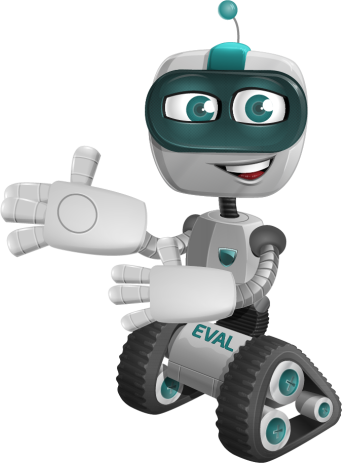Table of Contents
ToggleIntroduction to How to conduct Internal Audit
An Internal Audit is a vital tool for businesses to assess the effectiveness of their internal controls, Risk Management, & compliance with policies. it helps identify any gaps or weaknesses in processes that could pose risks to the organisation. This article explores how to conduct Internal Audit effectively, from planning to reporting.
Why Internal Audits Matter
Internal Audits are crucial for a company’s long-term success. They provide an independent, objective review of a company’s operations & offer recommendations for improvement. These Audits are not just about identifying risks but also about ensuring compliance with regulations & policies. They help businesses prevent fraud, identify inefficiencies, & improve overall operations.
While they are often associated with identifying weaknesses, Internal Audits can also highlight areas where a business is excelling, providing valuable insights for strategic planning.
Key Steps in the Internal Audit Process
To conduct Internal Audit successfully, there are several key steps involved, from preparing for the Audit to analyzing & reporting findings. Below are the steps you should follow:
1. Defining the Audit Scope
The first step in how to conduct Internal Audit is to define the Audit’s scope. This includes determining which processes, departments or systems will be reviewed. It’s important to align the scope with the company’s risks & strategic goals.
2. Planning the Audit
Next, you need to develop a clear Audit plan that outlines the objectives, resources required, timeline, & Audit procedures. Having a solid plan ensures that the Audit is thorough & focused on the right areas.
3. Conducting Fieldwork
During fieldwork, Auditors gather evidence by reviewing documents, interviewing staff, & observing processes. This phase is essential for understanding how processes work in practice & identifying areas of improvement.
4. Analyzing Findings
Once the fieldwork is complete, Auditors analyze the data collected. This includes identifying patterns, gaps or discrepancies. The findings are compared against policies, regulations or best practices to assess compliance & performance.
5. Reporting the Results
Finally, the results of the Audit are compiled into a comprehensive report. This report will highlight any findings, along with recommendations for improvement. It should be clear & actionable, providing management with the information they need to make informed decisions.
Preparing for the Internal Audit
Preparation is key to a successful Internal Audit. It begins with assembling the Audit team & ensuring they have the necessary knowledge & experience. The team should also be familiar with the Audit tools & processes that will be used.
Additionally, you should ensure that relevant documentation is available for review. This may include policies, Financial records, operational reports or regulatory compliance documents. Preparing early can save time & reduce complications during the Audit process.
Gathering Data & Evidence
One of the most critical steps in how to conduct Internal Audit is gathering sufficient data & evidence to support findings. This can include reviewing Financial statements, inspecting operational workflows, & interviewing personnel. It’s important to ensure that the evidence is reliable, relevant, & representative of the process being Audited.
Analyzing Findings & Reporting
Once evidence is gathered, Auditors analyze it to identify risks, inefficiencies or compliance issues. They then generate a report with detailed findings & practical recommendations for improvement. The report must be objective, clear, & concise.
Challenges in Conducting Internal Audits
While Internal Audits are invaluable, they come with challenges. These include limited access to resources, resistance from staff, & tight timelines. Auditors may also encounter difficulties in gathering data or obtaining necessary approvals.
Moreover, Audit results can sometimes be met with pushback from departments that may feel defensive about their processes. Clear communication & a collaborative approach can help overcome these challenges & ensure that Audits are successful.
Best Practices for Effective Internal Audits
To conduct Internal Audits effectively, consider these best practices:
- Clear Objectives: Set clear goals for each audit, ensuring alignment with business objectives.
- Collaborative Approach: Involve key stakeholders early in the process to foster cooperation & transparency.
- Continuous Improvement: Use findings from audits to drive continuous improvement in processes & controls.
- Use Technology: Leverage audit management software to streamline the process, track findings, & generate reports efficiently.
How to Follow Up after an Internal Audit
Following up after an Audit is crucial to ensure that corrective actions are taken. A successful Audit doesn’t end with a report—it’s about implementing improvements. The Audit team should work with relevant departments to monitor progress & confirm that recommended changes have been made.
Takeaways
- Conducting an internal audit involves several key steps: defining the scope, planning, gathering data, analyzing findings, & reporting results.
- Internal audits help businesses identify risks, ensure compliance, & improve processes.
- Challenges include resistance from staff & limited access to resources, but these can be overcome with clear communication.
- Best practices for effective audits include clear objectives, involving key stakeholders, & using technology to streamline the process.
FAQ
How do you prepare for an Internal Audit?
Preparation involves defining the Audit’s scope, assembling a skilled Audit team, gathering relevant documentation, & ensuring access to necessary resources.
How long does an Internal Audit take?
The length of an Internal Audit varies based on its scope, but it typically ranges from a few weeks to a couple of months.
What are the common challenges in conducting Internal Audits?
Challenges can include resistance from staff, time constraints, & difficulty accessing data or obtaining approvals.
What is the role of technology in conducting Internal Audits?
Technology helps streamline the Audit process by providing tools for managing data, tracking findings, & generating reports more efficiently.
Need help?
Neumetric provides organisations the necessary help to achieve their Cybersecurity, Compliance, Governance, Privacy, Certifications & Pentesting goals.
Organisations & Businesses, specifically those which provide SaaS & AI Solutions, usually need a Cybersecurity Partner for meeting & maintaining the ongoing Security & Privacy needs & requirements of their Clients & Customers.
SOC 2, ISO 27001, NIST, HIPAA, HECVAT, EU GDPR are some of the Frameworks that are served by Fusion – a centralised, automated, AI-enabled SaaS Solution provided by Neumetric.
Reach out to us!





